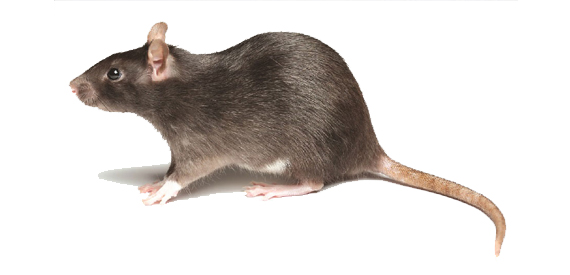What to Look For

Droppings: Finding mice or rodent droppings around the house is the most commonly known indications of a rat invasion. Measuring around 1/8-1/4″ (3-6 mm) long, these pellets are frequently deserted in places where food sources are nearby, for example, in the kitchen or pantries. People may likewise discover mouse droppings under sinks, inside bit cardboard boxes, along baseboards and over divider bars. Mouse dung can have microscopic organisms, transmit illnesses, for example, salmonella and Hantavirus, and trigger asthma. Mice can create more than 50 droppings daily, so immediately remove using gloves is vital to keeping the family safe from the potential health dangers postured by these critters.
Bite marks: Rodents can cause property harm by biting through any material – including plastic and lead funnels – to get food or water. House mice and Norway rats are additionally known to bite on wires behind walls, which can expand the hazard for a fire in the home. It’s important to keep a careful gaze for chew checks around the house, as this is a reasonable indication of a rat infestation.
Nests: Rodents want to settle in dull, segregated zones where there is minimal possibility of aggravation. House mice, particularly, build their homes out of destroyed paper items, cotton, pressing materials, divider protection and textures. In the event that you see these materials scattered around the home, it may be an ideal opportunity to bring in a licensed pest professional to play out an examination.
Tracks or rub marks: Rats tend to leave dim oil or dirt along dividers and wood planks as they trail all through the home between their nest and food. Look out for these rub marks, which are really caused by the rodent’s slick hide.
Noisy attic: Hearing odd noises in the walls, particularly around evening time, can be a bit concerning. Odds are these sounds can be ascribed to a group of rodents dashing about the house, between the dividers and up in the attic. Rodents are particularly attached to storage rooms since they give dull, separated spots to assemble homes. Unfortunately, lofts are among the rooms in a home that are barely noticeable amid the pest-sealing process. Try to keep this area all around ventilated and dry, and pick to store any family legacies in fixed plastic holders instead of cardboard boxes.
A real rat: Mice can breed quickly, so in the event that you spot one mouse in the house, it’s presumably there are others playing find the stowaway. In fact, a female house mouse can bring forth about six infants at regular intervals, up to 35 every year. That is a ton of mice!
On the off chance that you perceive any of these indications of a rat pervasion, don’t mess around! Rodents are not just a disturbance; they can reproduce quick and are known to spread more than 35 illnesses. They are additionally fit for biting through drywall and even electrical wiring in the home, which expands the hazard for a potential fire. The best activity in case of an invasion is to contact a licensed pest control professional proficient to assess the home and prescribe a legitimate course of treatment.
